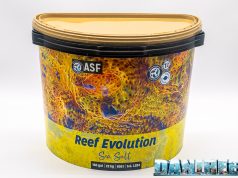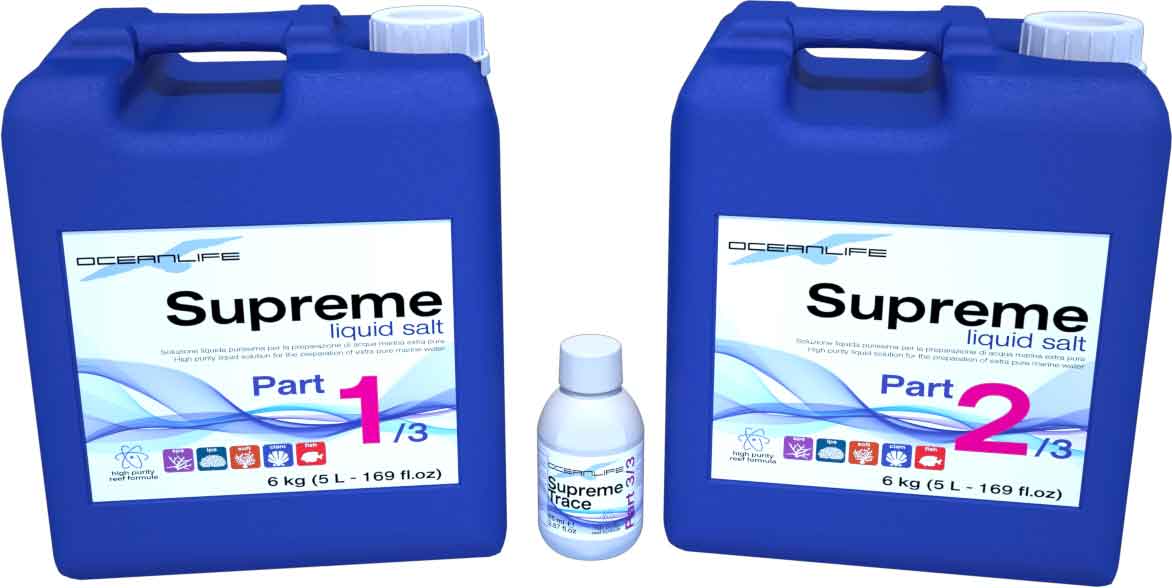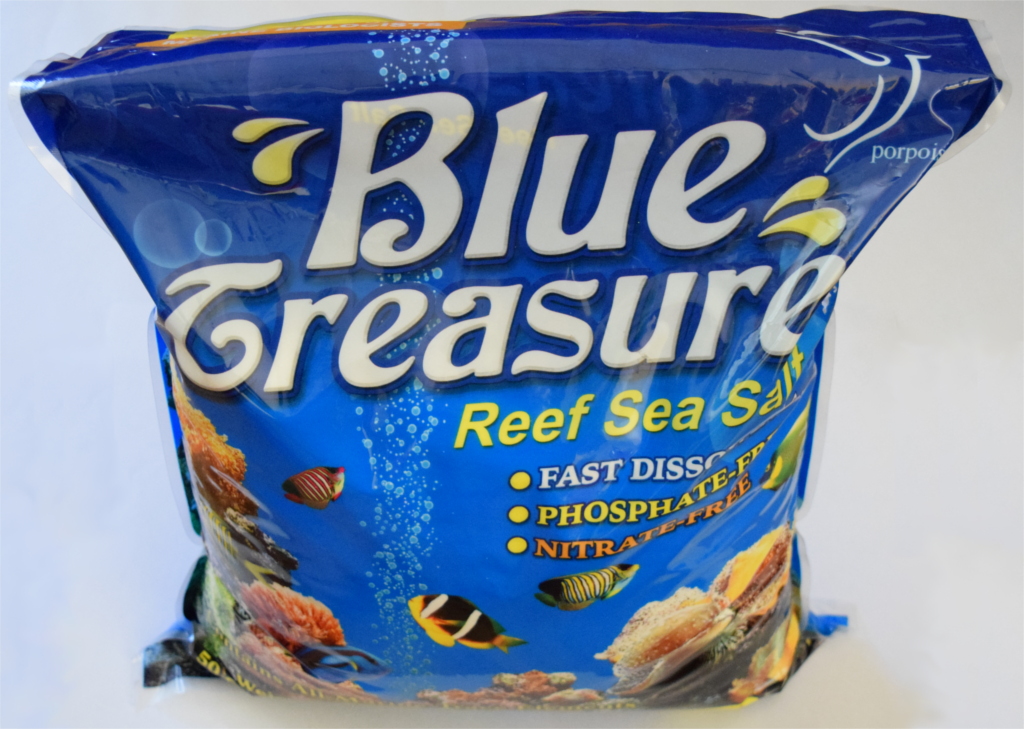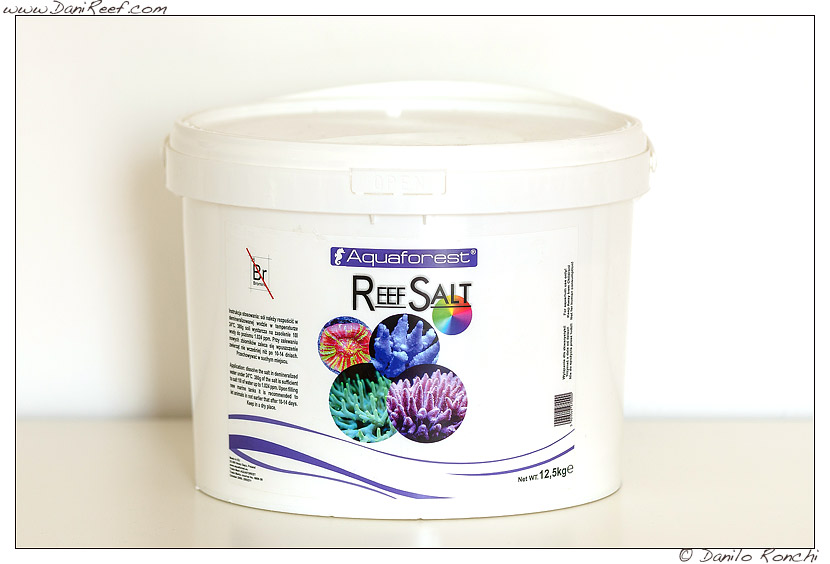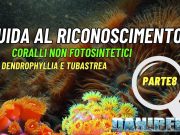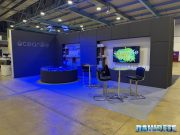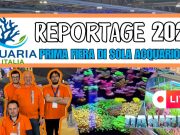 We’ve have been keeping you on your toes for several months, but the Blue Treasure reef salt review is finally here.
We’ve have been keeping you on your toes for several months, but the Blue Treasure reef salt review is finally here.
This post is also available in: ![]() italiano
italiano
This review has to be started by saying that we are rather satisfied: the tank, populated by fishes, anemones, soft corals and other invertebrates didn’t suffer at all from the change of salt. The anemone (Entacmaea quadricolor) has divided and I now have two anemones in perfect health. The Sarcophyton keeps growing and fishes are well, as always. Even with a fairly large change (more than 70%) this salt hasn’t given any problems to any aquarium inhabitants. It dissolves rather quickly and it is easy to dose as it doesn’t form clumps in the bag.
The pressure seal bag (which we initially doubted about) can sometimes be a bit tricky to close, but it revealed itself as completely airtight even after opening and closing it a few times. The Blue Treasure hard plastic bag is definitely more convenient than other thin ones found in other products that require a knot or a string to be closed each time.
Our Trial
We didn’t only judge this salt by observing our tank reactions, we also wanted to make sure it maintained its promises. In order to do this, we prepared exactly 3 liters of RO water at TDS=0 with the RO system Aqua1 75 SX-DR (review in Italian) in a perfectly clean container. We then inserted a small filter (emptied and cleaned) with a 240 l/h power, so 80 times the total water volume in a hour. We measured TDS again, this time it reached 1, maybe because of the hand in the water for a few second to place the filter in. A TDS=1 is still a very good RO water, as there are only one part per million impurities. We also measured 0 nitrite, nitrate, phosphate and other values with test kits.
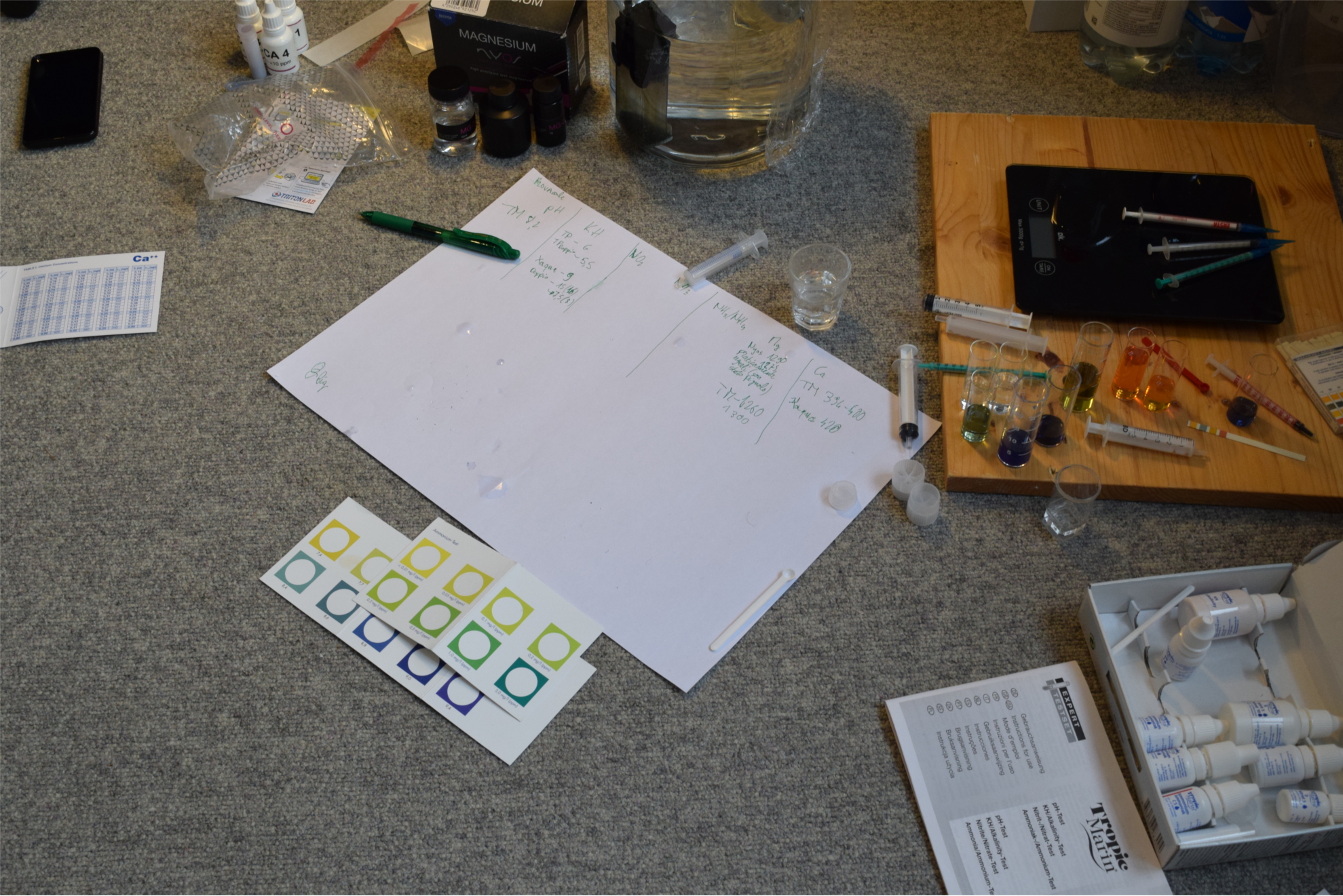
We followed the instructions on the salt container which specified to use 6.7 kg in 190 litres of water: we used 105.8 g (weighted by a precision scale) in the 3 litres of RO water we previously prepared in the container, moved by the filter. We left the solution for 72 hours, even though after one hour the salt had already dissolved. During this time the water container was partially closed to avoid excessive evaporation but retain an adequate oxygenation. During the last few hours the container was completely open.
Measurements
After 72 hours wait, Blue Tresure reef salt was tested for its properties with our test kits and Triton.
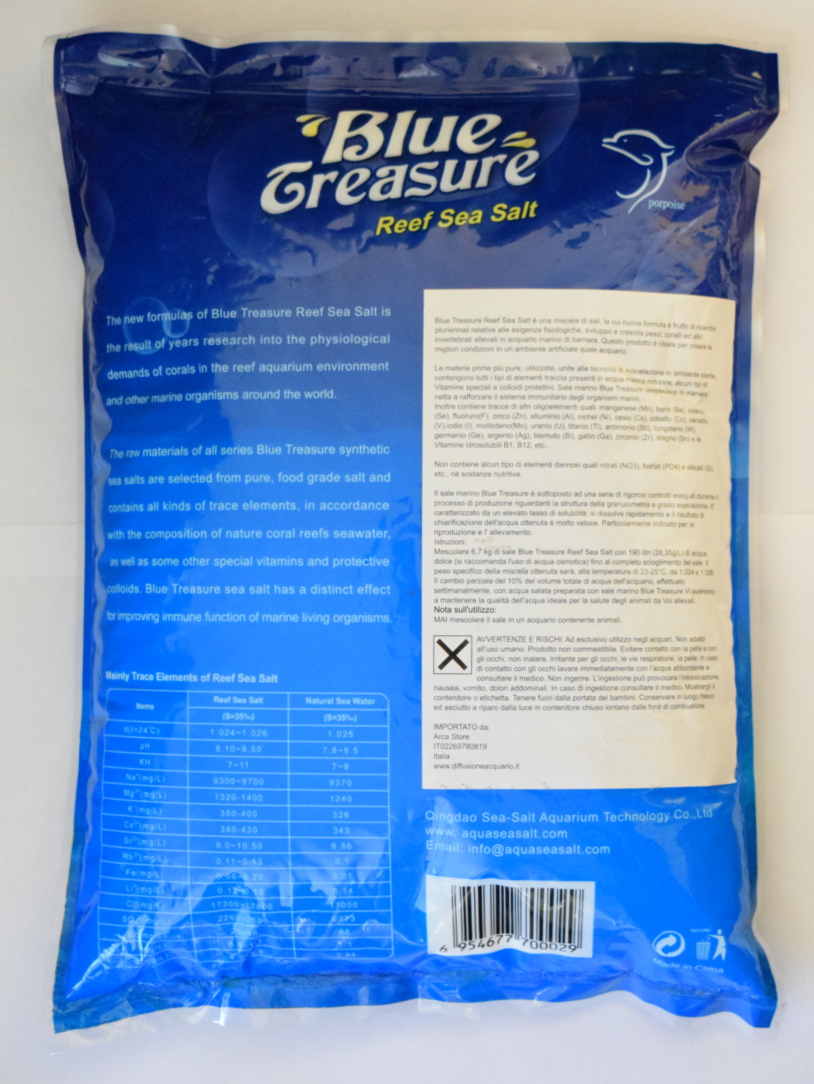
The density measured was 31 per thousand. This means that there was some leftover humidity in the salt itself, as if it was pure we would have obtained a 35 per thousand density. To sum this up we can say you should use about 10% more of the recommended dosage to obtain a perfect density.
This characteristic is not uncommon in many commercial salts, including those we tested in the past. We can think about Elos, for example, which indicated 20.5 kg in 600 litres, to obtain a calculated 33 per thousand density without considering the unavoidable losses.
Blue Treasure salt still remains drier than other salts tested. We would have appreciated the humidity to be taken into account in the instructions, where we still find the dosage as 6.7 kg per 190 litres of water, which is not correct. 6.7 kg of salt should be enough for roughly 170 litres. Taking this into account, we feel that we should add 5-10% to each element measured in water.
Following, the test kits results for values not measured by Triton:
- pH 8.1-8.2 (as the promised value of 8.1-8.5)
- KH 6-8, we have had quite a variation using different test kits (slightly lower than the promised value 7-11)
- Nitrite 0
- Nitrate 0
Comparative analysis Blue Treasure – Triton
We sent a sample of this salt to Triton lab for complete measurements. We only sent them a sample of already salted water, without a sample of RO water used, we should think about this to clarify a few points:
We cannot know if the values measured by Triton are due by the salt or by our RO water. For this reason, we will only talk about those values which are in the wanted range or lower than expected. If you have any question about this method, comments are open and we are available for answering as always.
The unwanted heavy metals are completely absent, as nitrite and nitrates we measured.
The measured macroelements in the wanted range are:
- sodium;
- calcium;
- magnesium;
- potassium;
- sulfur;
- mercury;
- selenium;
- cadmium;
- Tin;
- antimony;
- aluminum;
- lead;
- titanium;
- copper;
- lanthanum;
- scandium;
- tungsten;
- lithium;
- nickel;
- molybdenum;
- vanadium;
- zinc;
- chromium;
- cobalt;
- beryllium;
- silicon;
Boron was slightly high,while we noticed the absence of:
- bromine (Br), promised in the quantity of 20-40 mg/l and suggested by Triton to be at 62 mg/l.
- iodine (I);
- vanadium;
- zinc;
- silicon.
The last three, Triton tells us, are not important and were not even mentioned on the salt description. We are left to integrate iodine on its own, while silicon is better absent. These are macroelements with are fairly easily added by the use of a calcium reactor or through the DSB.
Price
As we already mentioned in the preview, the salt is available in different packaging as following:
- 20 kg pack 45,09 € (2,25 €/kg)
- 20 kg bucket 56,36 € (2,82 €/kg)
- 6,7 kg bag 15,56 € (2,32 €/kg)
- 3,35 kg bag 8,05 € (2,40 €/kg)
- There is also a bucket containing 3 x 6.7 kg bags, so 20.1 kg total.
Blue Treasure salt has a very competitive price compared to the competition we already tested, around 2.25 €/kg for 20 kg. Equo Essenza Reef (review) with 3.4 €/kg, Aquavitro Salinity (article) 5.7 €/kg, Aquaforest ReefSalt (Italian review) with 2.48 €/kg, AGP‘s Corals Sea Salt 3.95 €/kg (article). These prices are considered as if buying 20 kg, more or less.
Final verdict
Blue Treasure reef salt has proved itself to be more than adequate for a tank with animals such as fishes, anemones and soft corals. We don’t doubt it could also be used with more demanding corals, but they are not present in our test tank at this moment.
The test kits have measured good values for common elements such as KH, calcium and magnesium; nitrite and nitrates. The more elaborate test done by Triton has found some missing trace elements, but none of these missing elements was so essential or impossible to integrate separately.
The very positive outcome from these tests is the total absence of heavy metals, with copper, mercury, lead and others having a 0 value. By using this salt we are certain that we are not introducing any harmful elements in our tank.
PRO
![]() Pollutants completely absent
Pollutants completely absent
![]() Very competitive price
Very competitive price
CONTRO
![]() humidity level (just like any other salt)
humidity level (just like any other salt)
![]() a few secondary macroelemets missing, including iodine which has to be added separately
a few secondary macroelemets missing, including iodine which has to be added separately
Blue Treasure Reef Salt
| Manufacture Quality | |
| Quality | |
| Quality Price Relationship |









